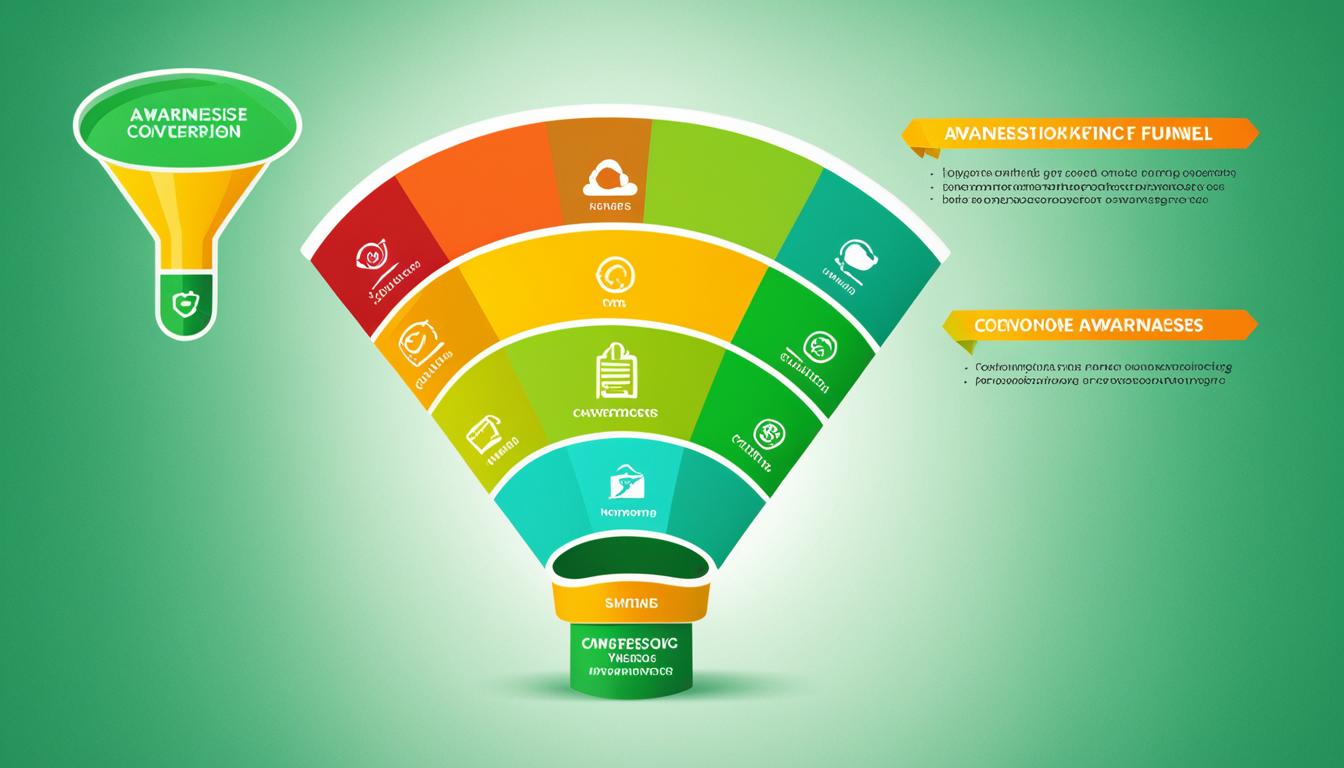Purpose-driven marketing is also known as purposeful or meaningful marketing. It’s a strategy where organizations align their communication with a social cause that matches their core values. It helps build real connections with consumers through shared values. In our world, people look for brands that stand for something more. That’s why purpose-driven marketing is becoming more popular.
Key Takeaways:
- Purpose-driven marketing aligns a brand’s external communication with a social cause that reflects its core values.
- Consumers are more likely to trust and support purpose-driven companies.
- Organizations with a strong sense of purpose attract and retain customers, leading to improved business performance.
- Gen Z, the digitally native generation, expects brands to take a stand on social and environmental issues.
- Building a purpose-driven brand involves defining a clear purpose, integrating it into operations, and effectively communicating it to the audience.
The Importance of Organizational Purpose
Organizational purpose is key in purpose-driven marketing. It attracts consumers who prefer companies with a clear purpose. The Zeno Study shows that such companies can draw and keep customers up to four to six times better. This highlights the big effect of organizational purpose on a company’s success.
Yet, there’s a gap in perception organizations must tackle. Only 37% of people think companies are fully living up to their purpose. It’s vital for businesses to clearly share their purpose. They must weave it into every part of their business. This helps close the gap and make a real connection with customers.
Consumer Preferences and Organizational Purpose
- Consumers are increasingly inclined to support purpose-driven companies
- Companies with a strong sense of purpose are more likely to attract and retain customers
The Business Benefits of Organizational Purpose
- Purpose-driven companies are four to six times more likely to attract and retain customers (Zeno Study)
- Organizations that clearly convey their purpose can bridge the perceptual gap and establish a genuine connection with consumers
Organizational purpose is at the heart of purpose-driven marketing. It helps firms connect more profoundly with customers. By linking their purpose with consumer values, companies can positively impact society. At the same time, they succeed in a changing market.
Purpose-Driven Marketing in Action: The Patagonia Example
Patagonia is a leading outdoor apparel brand known for its commitment to the environment. It resonates with customers who love nature and want to protect the environment.
Patagonia leads various initiatives for a greener planet. Among them is the “#CrudeAwakening” campaign, which focuses on protecting our coastlines from oil spills.
The campaign was a big success, leading to the creation of new laws to protect our coastlines. People support Patagonia not just for its products but also for its dedication to environmental causes.
Patagonia’s Purpose-Driven Initiatives
| Initiative | Description |
|---|---|
| #CrudeAwakening Campaign | A campaign aimed at protecting coastlines from oil spills through raising awareness, driving advocacy, and influencing policy changes. |
| Example 2 | Description 2 |
| Example 3 | Description 3 |
Through actions like the #CrudeAwakening campaign, Patagonia proves it’s not just about creating great products. It’s also about making a positive impact on the environment.
The Impact of Purpose-Driven Marketing on Gen Z
Gen Z, aged under 25, leads the charge in valuing purpose-driven culture. They are a tech-savvy group that cares deeply about social and environmental concerns. They demand that brands take a stand on these issues. Gen Z’s focus on purpose affects how customers behave.
Gen Z believes in making a better world for those who come next. They look for brands that share their values and show real dedication to making a difference. They are drawn to marketing that shows a brand’s true commitment to society and the environment.
To catch Gen Z’s eye, organizations need to focus on purpose-driven marketing. This means messaging should include social and environmental causes. Also, actions need to back up those messages. Gen Z shoppers support brands that help improve the world.
When companies support causes important to Gen Z, they build strong ties and loyalty. Effective marketing campaigns that focus on social and environment issues connect with Gen Z’s wish for positive change. This strengthens both the brand and the cause’s impact.
Brands that connect with Gen Z through genuine marketing win loyal customers. Gen Z talks about brands they like on social media. This provides a chance for brands to spread the word about their efforts and increase their visibility.
In the end, purpose-driven marketing does two things. It grabs Gen Z’s attention and loyalty and serves a bigger purpose. Embracing this type of marketing lets brands positively influence society and the planet while creating a dedicated customer base.
The Internal Aspect of Purpose-Driven Marketing
Purpose-driven marketing is not just for talking to the outside world. It also helps people inside a company feel they belong. Employees today want more than a job. They want to be part of something larger than themselves. Making an environment that’s driven by a purpose helps meet this need.
A study by the Edelman Trust Barometer shows that 92% of workers think it’s important for CEOs to talk about social issues. This shows that workers want their companies to have a clear purpose and to help society. With purpose-driven marketing, employees feel connected to the company’s mission.
Purpose-driven companies can attract and keep the best employees. In a tough job market, people look for more than a paycheck. They seek companies that share their personal values. Companies that focus on purpose and social causes are more appealing to potential employees.
Ignoring purpose-driven marketing can lead to big problems as employee expectations change. Companies that don’t offer a sense of purpose might lose their employees. In a world that values purpose, companies focusing on purpose-driven marketing can succeed.
Employee Engagement and its Impact
How engaged employees are is key to successful purpose-driven marketing. Employees who believe in their company’s purpose can become strong supporters of the brand. They are willing to do more for their work. By building purpose-driven places, companies can make employees more engaged.
The Power and Benefits of Purpose-Driven Marketing
Purpose-driven marketing is very beneficial for companies. It makes a brand stand out, increases customer loyalty, and boosts business success. A study found that 89% of people would switch to a brand supporting a good cause. Purpose-led companies grow much faster than those without a clear mission. This shows how purpose-driven marketing can lead to success.
Business Performance
Purpose-driven marketing greatly improves business outcomes. Brands focused on social causes do better than their rivals. They grow faster and make more money. A study by Cone Communications found these companies grow three times faster. Having a meaningful purpose helps organizations grow sustainably and meet changing consumer demands.
Differentiation
Being different is essential in a crowded market. Purpose-driven marketing lets brands stand out by supporting social causes. This attracts customers who share the same values. It not only makes a brand unique but also forms a deep connection with people.
Customer Loyalty
Customer loyalty is crucial for a successful business. Purpose-driven marketing fosters this loyalty. A combined study by EY Beacon Institute and Harvard Business School showed that 64% of consumers feel a strong bond with purposeful brands. When people relate to a brand’s mission, they choose it more often and recommend it to friends.
Building a Purpose-Driven Brand
Creating a purpose-driven brand involves a few key steps. First, companies must find their brand’s purpose. This goes beyond just selling products or services. It’s about the impact they want to have on the world. This mission statement and core values should connect well with who they aim to reach.
The purpose once found, must be woven into every part of the business. This includes how things are done each day. By doing this, companies show they are true to their mission. This makes the work environment filled with purpose.
Telling people about the brand’s purpose is crucial for bonding with customers. This means sharing the brand’s values, mission, and effects openly and honestly. Through social media, content marketing, and stories, brands can share their purpose. This helps attract and keep their audience’s attention.
Getting the audience involved is key to a purpose-driven brand’s success. By engaging with them, brands create a stronger bond and loyalty. This can be done with interactive campaigns, teaming up with similar groups, and projects allowing customers to help make a change.
In short, to build a purpose-driven brand, companies need to set their purpose, mix it into their work, share it well, and connect with their audience. Following these steps can help brands create a strong identity, deeply connect with people, and build a dedicated group of supporters.
Examples of Purpose-Driven Brands
Several brands are excellent at purpose-driven marketing. They focus on meaningful initiatives that match their core values. This approach connects well with their audience. Let’s look at some key examples:
1. Patagonia
Patagonia is known for its commitment to the environment. The outdoor clothing company stands strong on environmental issues. They use sustainable methods to make their products and support grassroots movements. Their actions have made them leaders in environmental conservation.
2. Ben & Jerry’s
Ben & Jerry’s goes beyond making tasty ice cream. They are deeply involved in social issues such as climate justice and racial equity. Through active engagement and advocacy, they influence positive changes in society.
3. Ikea
Ikea has set bold sustainability goals. With projects like H22, they plan to be fully sustainable and climate positive by 2030. They aim to offer sustainable, affordable furniture while cutting their carbon emissions. Their efforts cover responsible sourcing, waste reduction, and supporting communities.
4. Adidas
Adidas focuses on sustainability as a key part of their strategy. They pledge to use only recycled materials and aim for climate neutrality by 2050. Their commitment meets the demand for ethical products and leads to industry-wide changes.
5. Lush
Lush is a pioneer in sustainability in cosmetics. They choose ethical ingredients and reduce packaging waste with creative solutions. They paused their social media to stress mental health awareness, promoting digital breaks and meaningful dialogue.
These brands show how integrating purpose into their business benefits society. They connect deeply with their audience by being genuine about their missions. Their work positively impacts the world and their customers.
Conclusion
Purpose-driven marketing has become a key approach in today’s business world. It involves supporting a social cause and making it a core part of the business. This helps connect with consumers on a deeper level and makes a positive change in the world.
Brands focused on purpose stand out and build strong customer loyalty. Research shows people prefer brands that support good causes. Companies driven by purpose grow almost three times faster than others, showing the power of this marketing strategy.
Today, consumers want brands that care about making a difference. Companies need to clearly define their purpose and weave it into everything they do. This will help them connect better with customers, attract great employees, and lead their industries. Purpose-driven marketing isn’t just good for the world; it’s great for business too.






